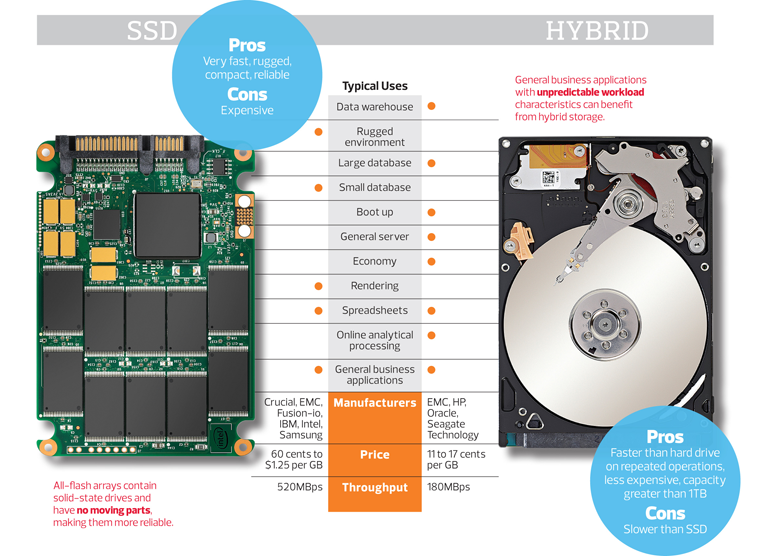Storage Wars: SSD vs. Hybrid Hard Drives

The pros and cons of all-flash and hybrid arrays.
Credit: Intel (SSD); Seagate (Hybrid)
IT managers architecting storage now have a choice between all-flash arrays and hybrid arrays that mix solid-state storage with spinning disks. Both types of storage subsystems have a place in the data center.
Hybrid Drives
Hybrid drives combine a small amount of flash memory (usually 8 gigabytes) with a conventional hard drive, whereas all-flash arrays contain solid-state drives. Hybrid drives are faster than conventional hard drives and less expensive than solid-state drives.
The hybrids use a sophisticated caching mechanism to keep the most-used blocks of data in flash memory, which considerably speeds operations. Organizations that store large anounts of data, such as motor vehicle departments, may appreciate hybrid arrays because they can achieve performance gains at a reasonable cost.
Solid-State Drives
Of course, solid-state drives are much faster than hybrid drives, but carry a price premium. Finance or budget departments may opt for SSDs to speed up business analysis and data cubes. And the ruggedness of the devices may appeal to public-safety agencies.








